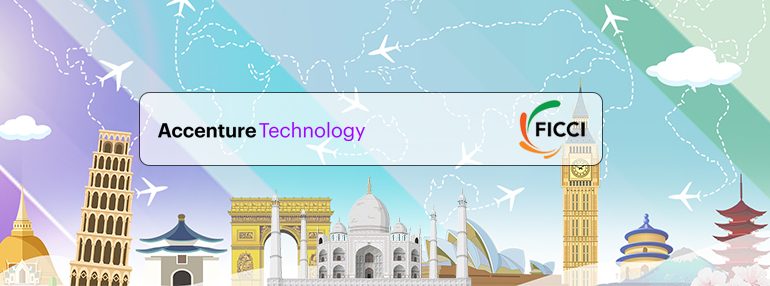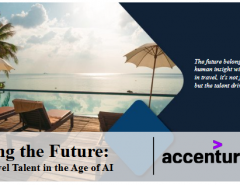It’s no secret that the travel industry was among the sectors most adversely affected over the past two years. And that recovery will certainly not happen overnight. Cautious optimism can be ruled out however as countries revisit their strategies, and gradually allow their economies to open facilitating an enabled life. For the travel industry, however, this is only one-half of the story. The past two years have impacted travel at a much deeper, granular level leading to tectonic shifts which would have been inconceivable even a few years ago. The outcomes are affecting both how industries and individual’s function. At the individual level, these deep-rooted, industry-wide changes will likely not just impact the overall traveller experience but also their fundamental relationship with travel.
While the pandemic that continues to redefine operational transformation for many sectors, another huge catalyst affecting the travel sector has been the race to control carbon. So much so that the future of the automotive and industrial sectors is now irreversibly linked to controlling emissions. The move to carbon neutrality is now being driven by evolving consumer mindset and regulatory demand. This is impacting not just the supply chain across sectors but is also reverberating across the travel industry – creating and amplifying the shift towards a converged ecosystem in towards responsibility and sustainability. This is a welcome promise to the future of travel in more ways than one, and it is helping the automotive, industrial, and travel sectors realise their goals of embracing carbon neutrality, driving efficiencies of scale, and improving customer-centricity.
The pandemic has played a significant role in this ongoing (r)evolution as it has changed customer behaviour . Hybrid working is here to stay and is gradually pushing people away from city centres to distant suburbs and even beyond. Others are reluctant to rideshare or use public transport due to physical distancing. People across continents are more conscious and increasingly vocal about issues such as sustainability, rising pollution, on-road vehicles, thermal power generation, and factories. In many western cities, the concept of the ‘15-Minute City’ is taking shape. As the name goes, the idea is for communities to live, learn and thrive within a 15-minute radius by foot or bike.
As one can see, the movement of people and things from place to place is undergoing a major revolution, where hyper-personalization, one-touch & instant gratification, and move to a more sustainable future are prime considerations. Through this blog series, we examine the road ahead for the travel industry. We examine synergistic alliances with other sectors that are driving transformational changes in its overall modus operandi.
This is leading to disruption on multiple fronts, with entrants from non-traditional players. Many of these ‘digifirst’ entrants avoid the constraints of legacy players in terms of operational costs or the inertia. We have seen this with Tesla, who introduced and mainstreamed electrified and autonomous cars. Elsewhere, other disparate enterprises are bonding together, drawing on the other’s competency to forge unlikely partnerships that undercut the business of older, legacy players in the travel sector. An example of this is Google. The tech giant recognizes that consumers today value speed and openness above all else. The Google flights app offers predictions on flight delays using both historical evidence and AI-driven algorithms. Travelers can also access flight delay predictions via the app, which is a significant benefit.
Uber has a different story to tell. A white paper released by the ride-hailing app outlined plans to develop a network of on-demand, electric air taxis over congested cities like Los Angeles and Sao Paolo. The plan sounded unrealistic to airline traditionalists, given the current state of battery technology. Uber then went ahead and asked passengers how their current demands were not being met. The company envisioned a futuristic solution to meet them – first called Uber Air and subsequently changed to Uber Elevate. Uber went on to partner with the European airline Transavia to offer Uber ESCAPE. This allowed customers to grab a flight on the app as easily as a car. These efforts helped Uber disrupt the status quo and create new business opportunities by offering novel services to customers.
The automotive industry is similarly not without its share of disruptions prompted by the need to be less carbon intensive. This is driving the convergence of technologies that are redefining the interdependencies, competencies, and functionalities of the industry. Sustainability is a key feature uniting the travel and getting an even harder push post-pandemic. In this context, significant changes are visible in every sector. In Sweden, the call to embrace a low carbon future led to locals starting an anti-flying social movement, ‘flygskam’ (which in Swedish literally means ‘flight shame’) in 2018. Aimed at reducing the environmental impact of aviation, Sustainable aviation fuel (SAF) has emerged as a viable alternative fuel with up to 90% reduction in emissions. The movement gained traction throughout northern Europe and is testimony to how consumers are increasingly vocal and pushing the travel industry on climate change. Reshaping the synergies between the automotive and travel tech sectors, these developments are driving long-term sustainability in a volatile and uncertain market where digital and emerging technologies are redefining competencies and functionalities from moment to moment. California will ban combustion engines by 2035.
Automotive manufacturers focus on aspects that span the production, use, and end-of-life phases in order to reduce the environmental footprint. Simply replacing internal combustion engines with battery and fuel cell electric technologies will not by themselves resolve the carbon issue, and therefore automotive manufacturers will need to adopt circularity-focused design practices and maximise consumption of renewable and reusable materials for producing new vehicles. The automotive sectors are also pushing the envelope on sustainability and cost savings by adopting the ‘Digital Twin’ approach. This optimizes every aspect of the vehicle before committing to a physical prototype. Manufacturers can verify the mechanical, electrical, and physical components before creating any physical prototype. This allows them to boost productivity, streamline operations and time-to-market. These compelling customers, economic and climate change-linked propositions are driving tectonic industry shifts. Technology is now playing the backbone of disruption across industries. Couple this with changes in the supply chain – local manufacturing and just in time manufacturing is gaining momentum that links into local sourcing to enable a more resilient supply chain. These changes are driving an interplay of different modes of transport and having an all-pervasive impact on electric vehicles and smart automobiles on the one hand to cab aggregators, to airlines and airports, and even to hotels and resorts. As an example, to develop smart connected products and services, the capital goods company, CNHI Industrial is collaborating with Microsoft and Accenture. The program is an integral part of CNH Industrial’s digital transformation initiative, designed to help the company grow top-line revenue, build a digitally enabled workforce, and enhance sustainability. The connected vehicles will provide customers with new services and functionalities in a variety of areas, including computer-aided farming, predictive maintenance, enhanced fleet management, and green transportation.
The pandemic may have been a catalyst that changed how the travel, automotive and industrial sectors engage with their customers, but it was by no means the only one. Civil societies and governments are mobilizing private enterprises, industries, and consumers alike to change both production and consumption patterns in a more environment-friendly direction. All stakeholders including customers, investors, employees, and regulators, expect companies to become more sustainable. But that’s not the right reason to act – it’s the right thing to do.
While this is likely to be a cause turbulence in the travel industry, at least in the near to mid-term, the outlook remains quite positive and companies prioritizing responsible practices will reap significant and tangible benefits.
This
content is provided for general information purposes and is not intended to be
used in place of consultation with our professional advisors. This
document refers to marks owned by third parties. All such third-party
marks are the property of their respective owners. No sponsorship,
endorsement, or approval of this content by the owners of such marks is
intended, expressed, or implied.
| Co-Authors | ||

Seshasai Kandrakota |

Sharad Kumar Singh |

Ashish Singh |

Ashish Kumar |
||





